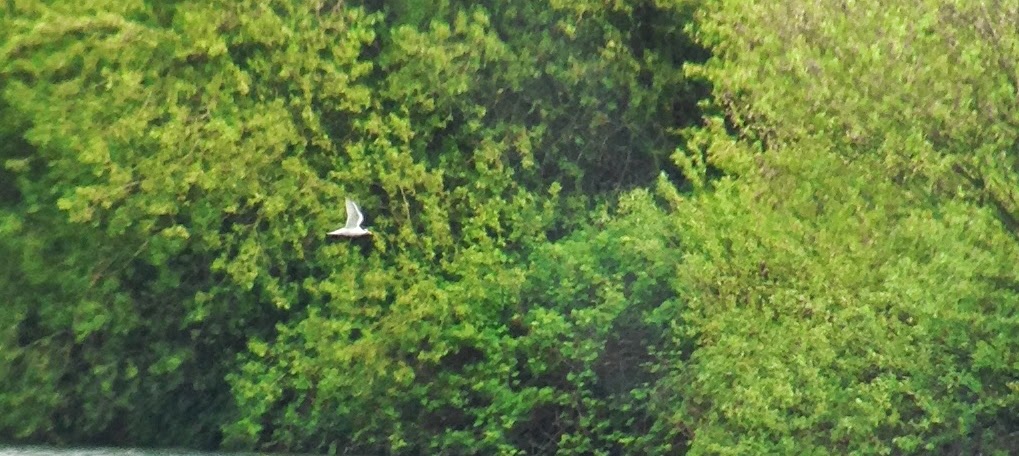 |
| Sedge Warbler - Acrocephalus schoenobaenus |
Sedge warbler are a pretty common bird in Northern Europe, often heard and seldom seen well these beautiful sub-Saharan migrants certainly have a song which packs a punch, but what makes their songs so interesting?
Whilst working at Kvismaren bird observatory in Sweden, I paid great attention to the sounds of all birds around me, I'm a firm believer that time in the field and first hand experience of sights and songs is the only real way to learn something, tapes and books can only get you so far, field craft and patience fill the gaps. Back to it then, often hearing more sounds than I could identify I put a great deal of time into splitting songs up, listening to different intros, tones, flow of songs the speed etc. I found this satisfying and was able to learn a great deal. One particular part of our work in the Spring was to paddle down the Kvismare canal recording all singing Acrocephalus and Locustella warblers, typically on the reserve you can record Reed, Great Reed, Sedge, Marsh, Grasshopper, Savi's and River Warbler. Paddling along the canal on these surveys I came to notice something that I have read about with Sedge warblers; they are very good at imitation. Not only this, but I realised that as we passed through differing habitats alongside the canal, the repertoires changed. As we passed through dense reed-bed, the sedgies sang their disjointed cacophony of reed dwelling species, bearded tit, reed warbler, chiffchaff, even coot were imitated by the sedgies, all mixed in to make an almost flowing song. As we approached the marshes the sedgies would imitate greenshank, spotted redshank, spotted crake and wagtails. As we passed the bridge where swallows nested this theme continued, and the sedge warblers often incorporated swallow calls and even song into their own song. It became apparent that these birds were listening to those around them and gaining knowledge of their songs.
A term often used by sound recordists is platification of song, this refers to the learning period in a birds life when the bird is still perfecting it's song, often practice singing half heartedly to master the difficult notes or clean up the song. This plastification period is normally undertaken up until the first breeding season. The males hoping to sing a great song and show their prowess in a competitive environment when males sing full, loud songs to show their strength and condition, often the best delivered song winning the females and gaining the chance to breed.
With sedgies then, the plastification period may be longer than your average bird, learning to imitate birds wherever they come into contact with them and learning the calls well. This in theory increases repertoires and becomes a fuller (more impressive song). I have come to write this blog after listening to a sedgie on my local patch. Marton mere in Blackpool is your average reed bed nature reserve, certainly nothing super special, no breeding bitterns or locked gates, no wardens overseeing a strict management plan, no buffer zones or properly restricted access, just your regular slightly out of town reserve. Whilst listening to this sedgie half-heartedly I began to hear some strange calls. Whimbrel and Spotted crake were heard as clear as day. Those seven whistles had me scanning the skies and the dripping tap had me thinking the early morning had got to me, then I realised, sedgie!
Although disappointed at the lack of scarcity for the patch, this provided more questions than answers, where had this sedgie learnt these calls and why was it bringing them up into song now if those species imitated are nowhere to be seen (or heard). It makes me wonder two things, firstly has this sedgie heard these birds elsewhere on migration and remembered them (to add them into a song later in life) - Increased repertoire = increased breeding success? or has this sedgie heard these birds hear, on the mere and decided to imitate them off the top of his head? either way it seems beneficial for him to sing others songs, otherwise, why would he bother?
Does this mean then that if you hear sedgies singing other species' songs that they have been in direct contact with that species, the answer is probably. I've not heard of any studies on heritability of song within sedge warblers and I can only imagine that due to their prolonged plastification period (if in fact it ever ends) they only inherit their typical chundering song as an innate trait and then build their own song through experience and learning off their neighbours.
I wanted to include a whole host of sedge warbler songs that I had recorded myself into this post, but unfortunately I only have one http://www.xeno-canto.org/178218 (you'll need headphones for it I suspect). In this recording you should be able to decipher at least 3 distinct imitations; Yellow wag, Whitethroat and Swallow - interestingly all these species were present in the immediate area of where this recording was taken in Nottinghamshire.
So, my advice, rather than spend hours inside this summer moaning about how little can be seen at this time of year (unless you're cleaning up on passage waders or raptors), go out and listen to your local sedgies, try to pick apart their songs and see if there is anything interesting within the repertoires.
Personally I've heard sedgies imitate over 20 species. From Grey Heron, through Greenshanks and Bearded Tit to Spotted crake and Thrush Nightingale. They truly are immense at imitation and the more recordings gained from them, the more we will learn. Just leave your mobile voice recording and wander off, you may be surprised at the results.
Thanks for sticking with this, if you got this far. As always, apologies for the lack of postings.
.jpg)
.JPG)













